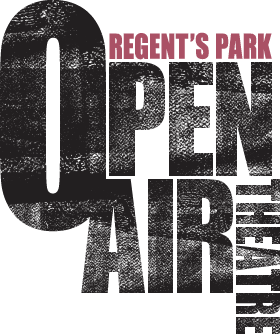Celebrating 90 Years of Outdoor Theatre

90 years ago, on 12 July 1932, impresario Sydney Carroll and director Robert Atkins, transferred their production of Twelfth Night from the West End to Regent’s Park for four performances.
The production, which had amassed nearly 100 performances at the New Theatre (now the Noel Coward), continued with its usual performance schedule, but moved outdoors by arrangement with the Office of Works – the first time the State had arranged for a Shakespeare play to be presented in a public park.
The production almost didn’t happen. In April 1932, Carroll and Atkins were presenting a new play at the New Theatre by Benito Mussolini (yes, the Italian dictator!), Napoleon: The Hundred Days, translated by John Drinkwater and featuring a cast of 70, including Atkins (replacing the original actor with a week’s notice) in the title role. The day after opening, Hannen Swaffer, the celebrated columnist, reported, ‘Diners out last night had a raw deal as every Italian waiter in London was at the New London to see El Duce’s play’. The production was a disaster and, although Robert Atkins and John Drinkwater were knighted by the King of Italy, a replacement play had to be found quickly.
The answer was Twelfth Night, designed entirely in black and white (with the exception of Malvolio’s stockings). It starred Jean Forbes-Robertson as Viola, Phyllis Neilson-Terry as Olivia, Arthur Wontner, Malvolio, John Laurie (known to many today as Frazer in Dad’s Army), Feste and Robert Atkins in the role of Sir Toby Belch.
Announcing the outdoor venture, the Evening Standard’s headline ran ‘West End Cast as Open-Air Players; seats for 4,000 – and the State lends a hand’. Tickets ranged from 1s 6d to 10s 6d, with 1,000 tickets available at the lowest price. The Daily Telegraph reported: ‘If a single deck chair remains vacant then some foolish playgoer is missing a treat’, and The Sketch proclaimed that ‘if the sun will shine as benignly as the play, then succeeding matinees, like the first, cannot fail to delight all who make the pilgrimage to the Royal Botanical Gardens* in Regent’s Park’.
We are thankful that the loss of £560 incurred from those first few performances didn’t dissuade Sydney Carroll and Robert Atkins from their vision for creating an outdoor theatre, and they presented the first full season here the following year.
To learn more about our 90-year history, explore our heritage timeline below or, if you would like to donate items (we are particularly in need of archive materials from the 40s and 50s) please email heritage@openairtheatre.com.
* It was named the Royal Botanical Gardens as a large glasshouse, by the same team that constructed the Palm House at Kew, stood in the location of today’s fountain, just outside the theatre grounds. The Royal Botanical Gardens were open to the public until 1932 (the year of our first performance), when it failed to secure a renewal of its lease. The gardens were renamed Queen Mary’s Gardens at the Silver Jubilee of King George V in 1935.
Images: John Laurie as Feste in Twelfth Night, 1932. © Hulton-Deutsch Collection/Corbis via Getty Images | Evening Standard article, 6 July 1932
